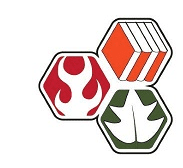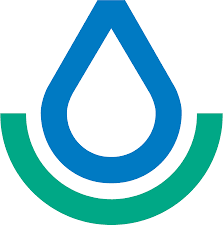Webinar
Webinar recording.
Integrating Public Health into Forest and Fire Management, presented by Savannah M D’Evelyn, PhD, Postdoctoral Scholar, University of Washington, on November 17, 2023.
This webinar is part of a monthly series hosted by the International Association of Wildland Fire (IAWF), the Pau Costa Foundation (PCF), and the Association for Fire Ecology (AFE) to bring together diverse voices from the global wildland fire community.
Webinar recording.
To enhance Oregon’s wildfire resilience, the State Legislature passed the 2021 SB 762 Omnibus Wildfire Bill that enacted recommendations from the Governor’s 2019 Wildfire Council. This included a $220M investment in landscape resilience, suppression response, as well as some new regulations for the home ignition zone for community protection. Upon release of a map showing statewide hazard, there was a significant public outcry, often based on misunderstandings or misinformation, that ultimately led to the map being rescinded and reworked. Join us for this webinar, where we will explore the broader intent of the legislation, its requirements for mapping, where the effort stands today, and what we continue to learn from the public’s reaction.
Webinar recording.
The Society for Ecological Restoration (SER) has co-authored a new set of “Standards of Practice to Guide Ecosystem Restoration”, launched this year in partnership with the FAO and IUCN-CEM as a contribution to the United Nations Decade on Ecosystem Restoration. Furthermore, various principles and standards guidance have been released or are under development since 2019, including the WWF-SER Mediterranean forest project certification standards, aiming to verify the quality of field-based restoration projects, providing guidance, structure, and an auditing process for ecological restoration.
In this SUPERB/IUFRO Forest Restoration Talk, organised in collaboration with SER, George Gann, SER’s International Policy Lead, presents an overview of the new Standards of Practice including insights from the Mediterranean project, discussing how these can support the design, implementation, and funding of restoration actions.
He is joined by Dr.Michael Kleine, Deputy Executive Director & Coordinator at IUFRO’s Special Programme for Development of Capacities, who provides views from a science and training perspective with reference to existing forest-related restoration guidelines, sharing experiences with implementing some of these on the ground.
Webinar recording.
Missoula Fire Sciences Lab Seminar Series
Nov 9 2023
Presenter: Dan Jimenez, RMRS Research Engineer
In the southwestern United States, non-native grass invasions have increased wildfire occurrence in deserts and the likelihood of fire spread to and from other biomes. Wildfires were historically small and infrequent in the warm deserts of western North America, with minimal impact on the desert vegetation. In recent decades, the fire regime has shifted with the spread of non-native grasses. Fires are increasingly burning large areas in desert habitats, largely driven by grassification, the physiognomic conversion of shrublands to grassland by non-native grass invasions. This conversion is especially concentrated at the upper elevational and northern latitudinal boundaries of the Sonoran Desert, which are transition zones to adjacent fire-prone biomes.
Catastrophic wildfires in the western United States pose significant risks to public health, infrastructure, and ecosystems. As these wildfires become more frequent, there is a growing need for a common methodology to identify suitable locations for prescribed burning aimed at mitigating future wildfire impacts to affected populations and ecosystems. This presentation explores the use of atmospheric chemistry transport modeling, satellite observations, and data from land managers to assess the effectiveness of prescribed burning interventions in reducing potential future wildfire smoke exposure. The presenter will offer lessons for states and rural environmental justice communities through a discussion on how implementing preventative prescribed burns in heavily forested areas such as Northern California and the Pacific Northwest may yield substantial net benefits for air quality across the entire western US, while similar interventions in other states would result in comparatively smaller impacts.
Webinar recording.
FRID statistics have been used for decades to help managers and scientists understand the ecological consequences of changing fire frequencies. The Forest Service Region 5 Ecology Program worked with UC-Davis to build a spatial FRID data layer that compiles information about fire return intervals for major vegetation types on the 18 National Forests in California and adjacent land jurisdictions. This data layer includes comparisons between pre-Euroamerican settlement (“pre-EAS”) and contemporary fire return intervals (FRIs). The FRID layer may be used for land and resource planning and assessment, as well as other natural resource applications such as fuels treatment planning, postfire restoration project design, management response to fire, assessing the effects of fire and fire regime change on ecosystems, and general ecological understanding of the historic and current occurrence of fire on the California National Forests and neighboring jurisdictions. This presentation focuses on the guts of the FRID data and the departure metrics, describes how to properly use the dataset, discusses some important caveats, outlines current updating and improvement work we are doing with the dataset, and describes a current national effort to develop a similar dataset and metrics for the US.
Webinar recording.
Recent destructive wildfires in northern California provide an opportunity to investigate how different factors influence home survival. We conducted an analysis of the 2018 Camp Fire, obtaining measurements from a randomly selected subset of homes in Paradise, to determine if nearby burning structures and/or nearby vegetation contributed to home survival, and whether new building codes in place since 2008 helped. The findings, corroborated by photographs taken of damaged but not destroyed homes, point to changes that could substantially improve outcomes.
Webinar recording.
A practitioner-oriented overview of LANDFIRE with a focus on fuels and how they react to modeling techniques. The subject area of discussion will be the 2022 Cooks Peak fire located in northern New Mexico. This webinar will be technical in its application and may offer insights for both beginner and advanced LANDFIRE users.
Presenters: Tobin Smail, LANDFIRE Next Gen Fuels Lead, USFS Rocky Mountain Research Station Fire Modeling Institute; and Charley Martin, LANDFIRE Fuels, TSSC Contract USGS/KBR
Webinar recording.
The sagebrush biome is one of the largest habitat types in North America, spanning 175 million acres and home to sage grouse and 350 other species. USDA’s Natural Resources Conservation Service (NRCS) launched the Sage Grouse Initiative in 2010 to deliver win-win voluntary conservation solutions that support ranchers and other landowners in improving the productivity of their working lands while benefiting sage grouse. The Initiative has successfully addressed key threats impacting sage grouse by focusing on population core areas. Science has helped strategically guide, refine, and inform these voluntary, private lands conservation efforts across 11 western states.




